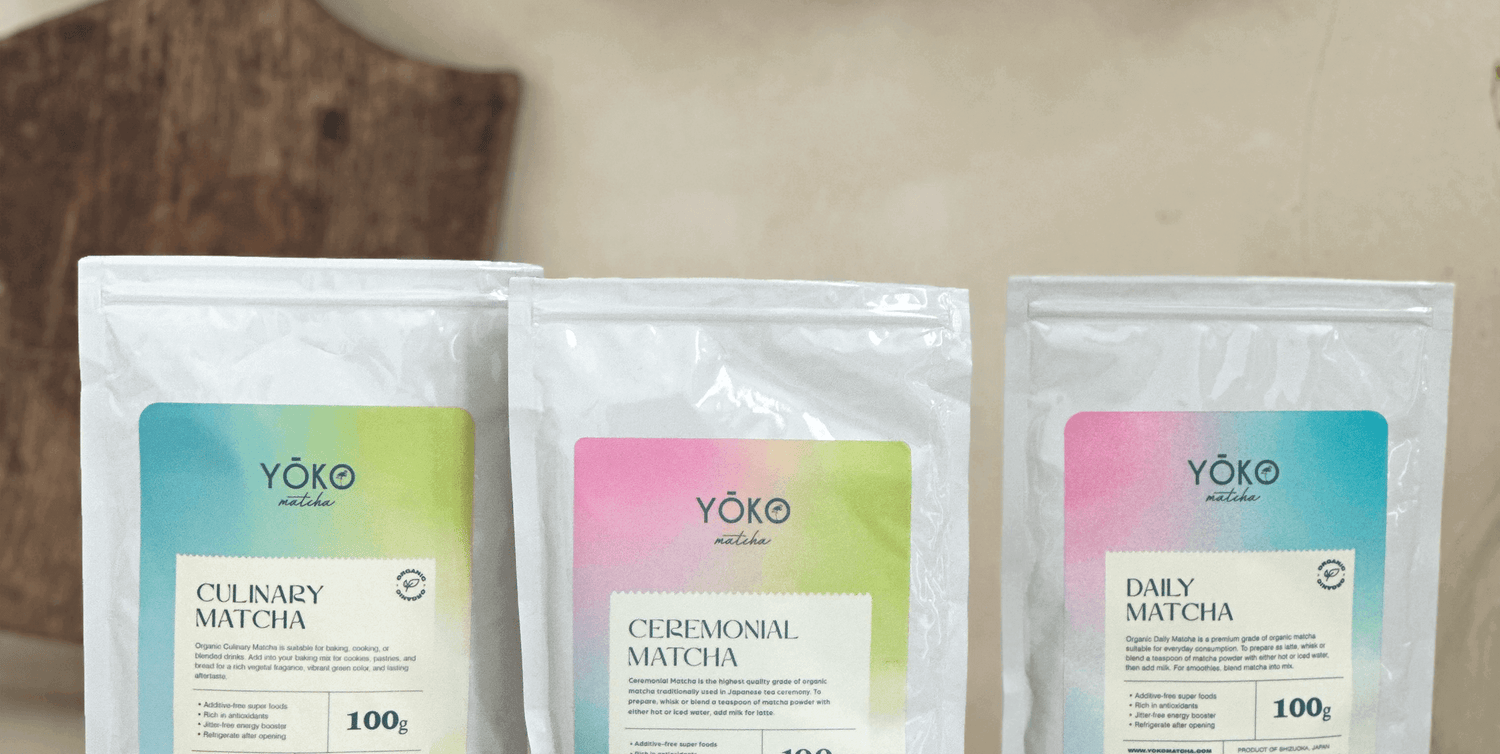
In the enchanting realm of green tea, matcha holds a special place, celebrated for its vibrant color, unique preparation process, and remarkable health benefits.
This verdant elixir, revered for centuries in traditional Japanese tea ceremonies, has captivated the modern world with its versatility and distinct flavor profiles.
As matcha gains popularity, it's essential to understand the nuances of its different Matcha grades. In this article, we delve into the world of matcha, shedding light on the differences between ceremonial, daily, and culinary grades, empowering you to make an informed choice when embracing this delightful tea.
CEREMONIAL GRADE MATCHA:
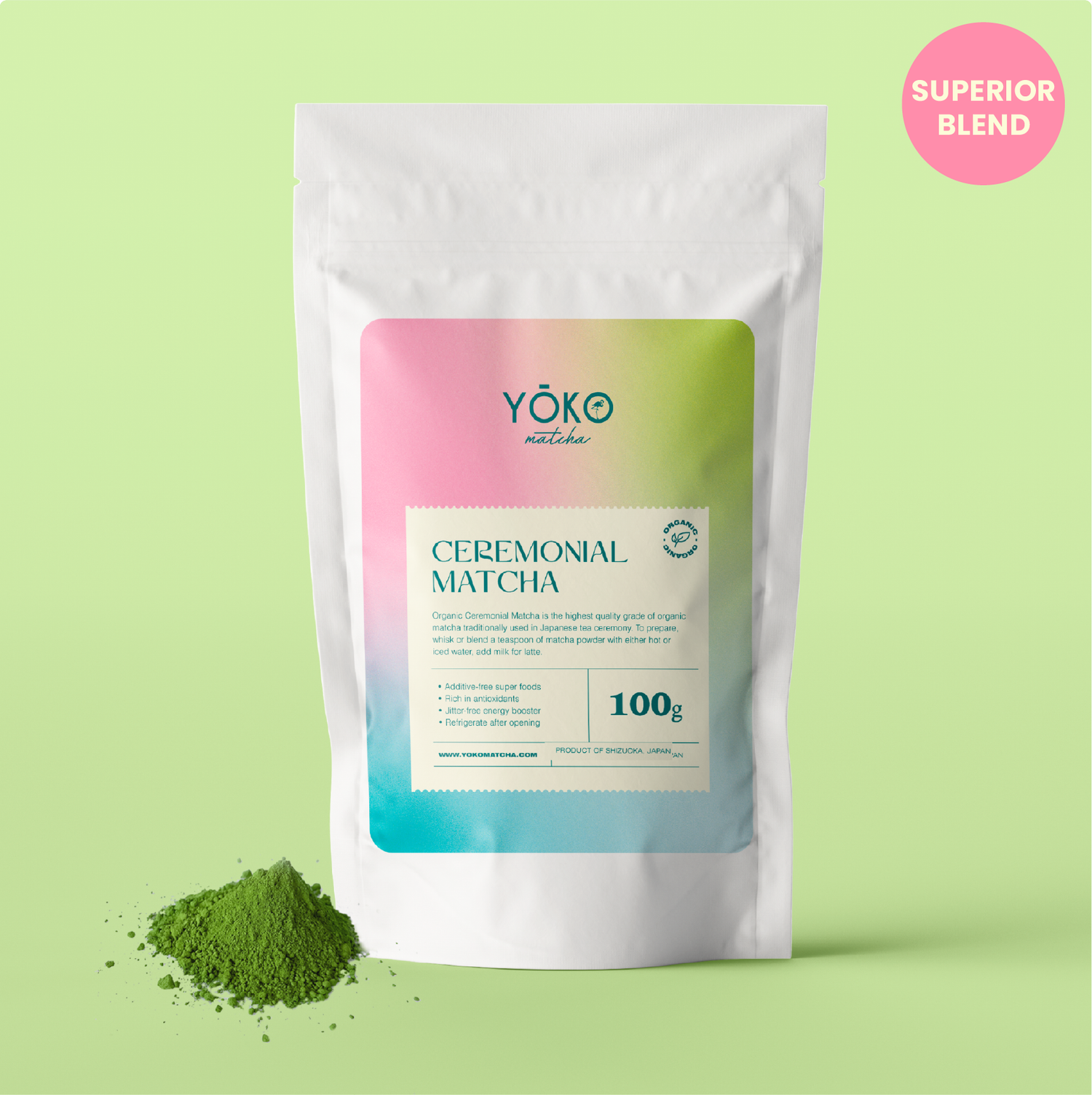
At the pinnacle of matcha grades sits the esteemed Ceremonial Grade. Crafted from the youngest and tenderest tea leaves, this matcha embodies the pinnacle of quality and refinement.
Sourced from the first harvest of the season, it is meticulously shade-grown to accentuate its vivid green hue and elevate its natural sweetness.
Ceremonial Grade matcha boasts a smooth, velvety texture and a delicate, well-balanced flavor with hints of umami. Traditionally used in sacred tea ceremonies, it exudes an air of tranquility and mindfulness, inviting you to savor each sip with reverence and appreciation.
Key characteristics:
Color and Appearance
Ceremonial Grade Matcha has a vibrant, bright green color. This is indicative of the young tea leaves that are carefully shade-grown before harvesting. The shading process increases chlorophyll content, giving matcha tea its distinctive color.
Texture
When whisked properly, Ceremonial Grade Matcha should have a smooth and creamy texture. It forms a frothy layer on the surface due to the fine particles suspended in the water.
Flavor and Aroma
Ceremonial Grade Matcha has a delicate and complex flavor profile. It typically offers a balance of umami (savory), sweetness, and a slight bitterness. The flavor is often described as grassy, vegetal, and with a lingering sweetness. The aroma is fresh and inviting.
Usage
Ceremonial Grade Matcha is traditionally used in Japanese tea ceremonies, but it's also popular for everyday consumption. It can be whisked with hot water to create a frothy, vibrant green beverage. It's also used as an ingredient in various culinary creations, such as matcha lattes, smoothies, ice creams, and baked goods.
Preparation
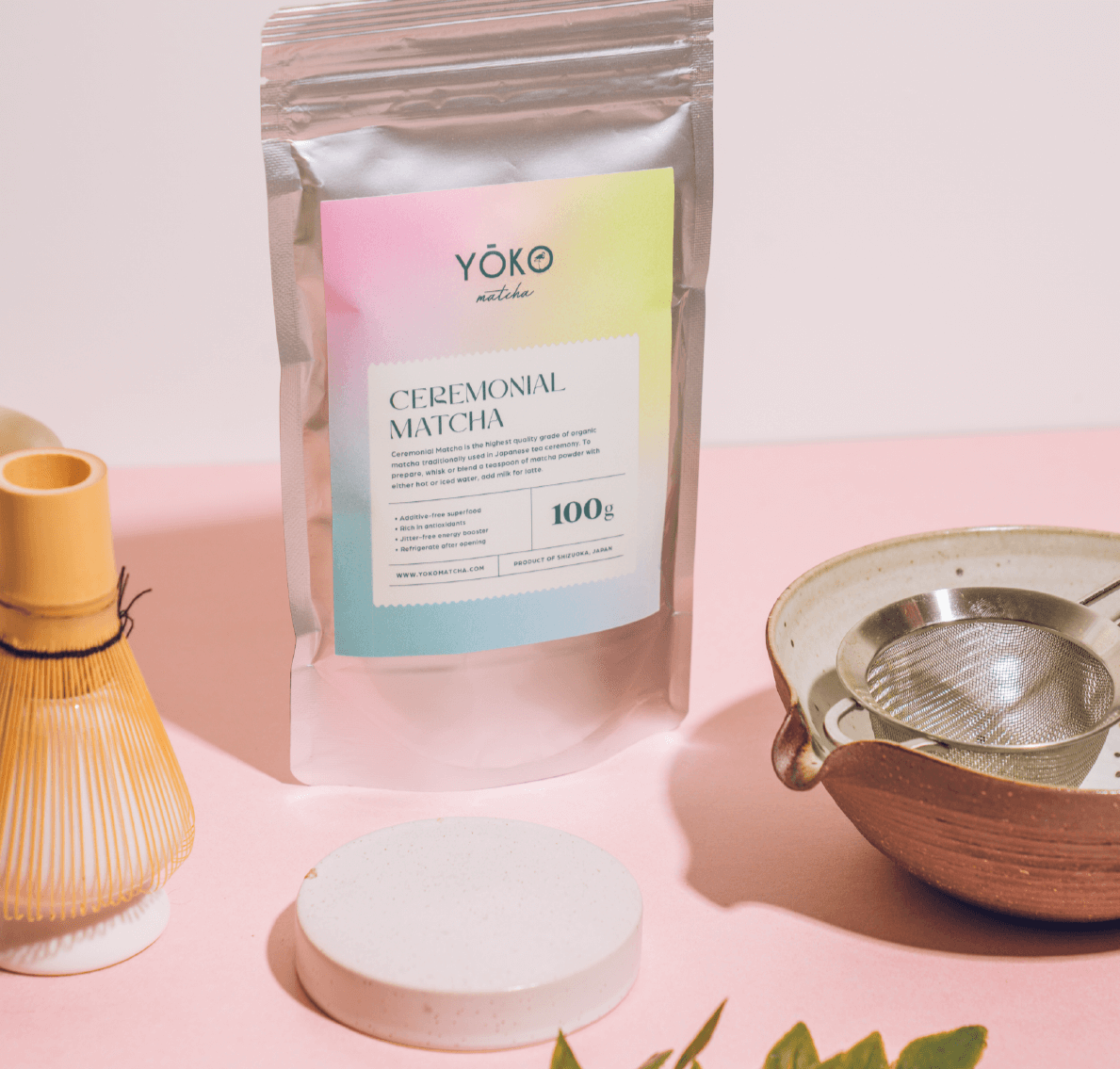
Experience the art of making a perfect matcha latte
1. Add the 1 tsp of matcha green tea powder.
2. Pour hot water over the matcha powder.
3. Using a whisk or a frother, vigorously whisk the matcha and hot water until it forms a smooth and frothy mixture.
4. Slowly pour the prepared matcha mixture into a cup with your milk of choice. If desired, add sweetener to taste and stir until well combined.
5. Enjoy as you begin your glorious day with a cup of matcha latte!
DAILY GRADE MATCHA:
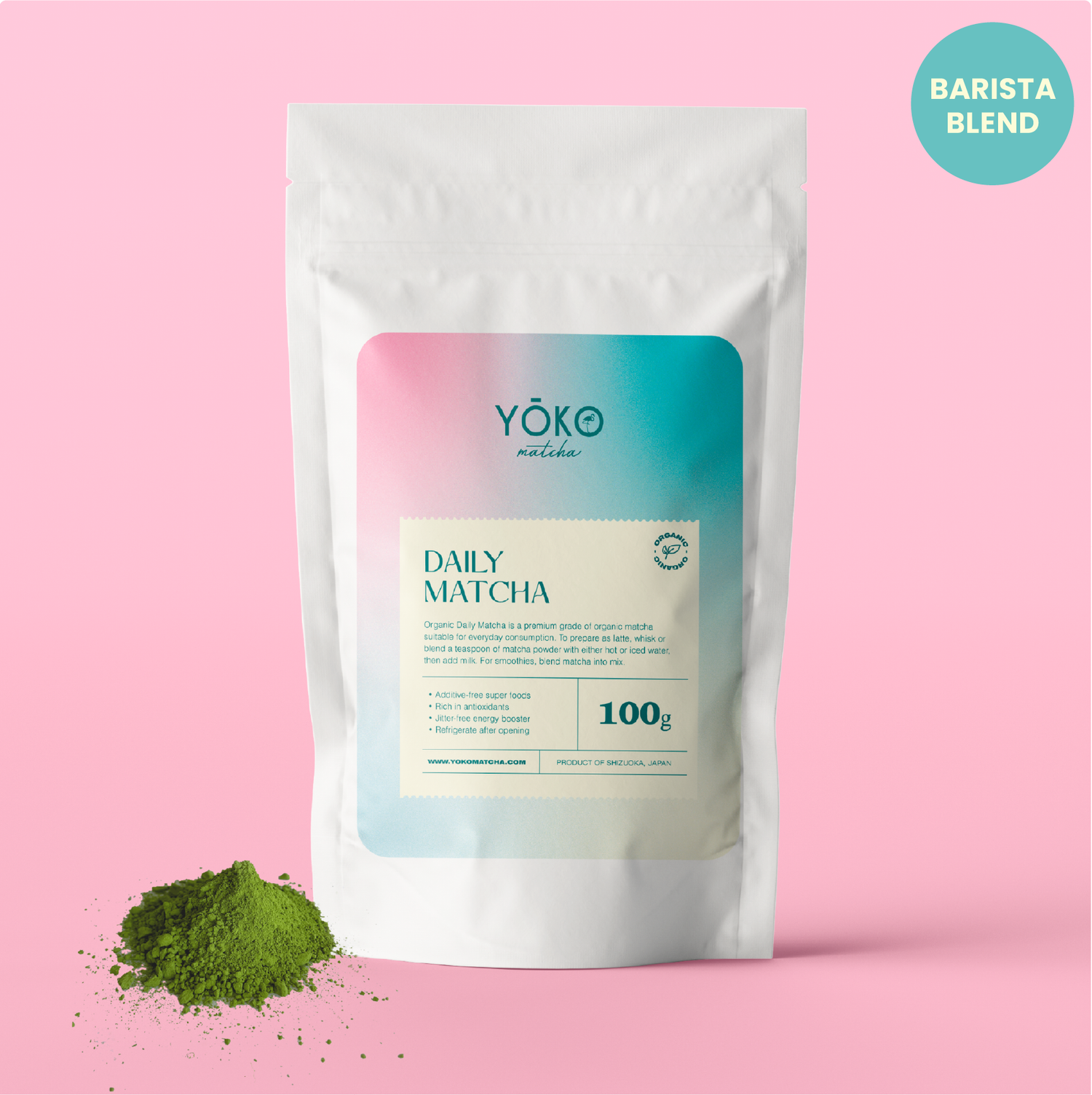
As the name suggests, Daily Grade Matcha is a perfect companion for your daily rituals. This matcha is sourced from the second harvest of the season, offering a balance of quality and affordability.
While it may not possess the same ceremonial allure, it stands out with its bolder flavor profile and vibrant green color.
Daily Grade matcha is versatile and serves as an excellent base for lattes, smoothies, and matcha-infused desserts. Its pleasant taste, coupled with a budget-friendly price, makes it an ideal choice for incorporating matcha into your daily wellness routine.
Key characteristics:
Color and Appearance
Daily Grade Matcha can vary in color, but it tends to have a slightly less vibrant green hue compared to ceremonial-grade matcha. The color can range from bright green to a more muted green-brown shade.
Texture
While Daily Grade Matcha should still have a relatively smooth texture, it might not be as creamy and frothy as ceremonial-grade matcha when whisked. The quality of the froth and texture can vary depending on the specific product.
Flavor and Aroma
The flavor of Daily Grade Matcha is often characterized by a balance between bitterness and sweetness, with a more noticeable astringency compared to higher-grade matcha. The aroma might be slightly grassy or earthy.
Usage
Daily Grade Matcha is intended for regular consumption and is suitable for making matcha lattes, smoothies, baked goods, and other culinary creations. It might not have the same level of complexity and delicacy as ceremonial-grade matcha, but it still offers the benefits of green tea consumption.
Preparation
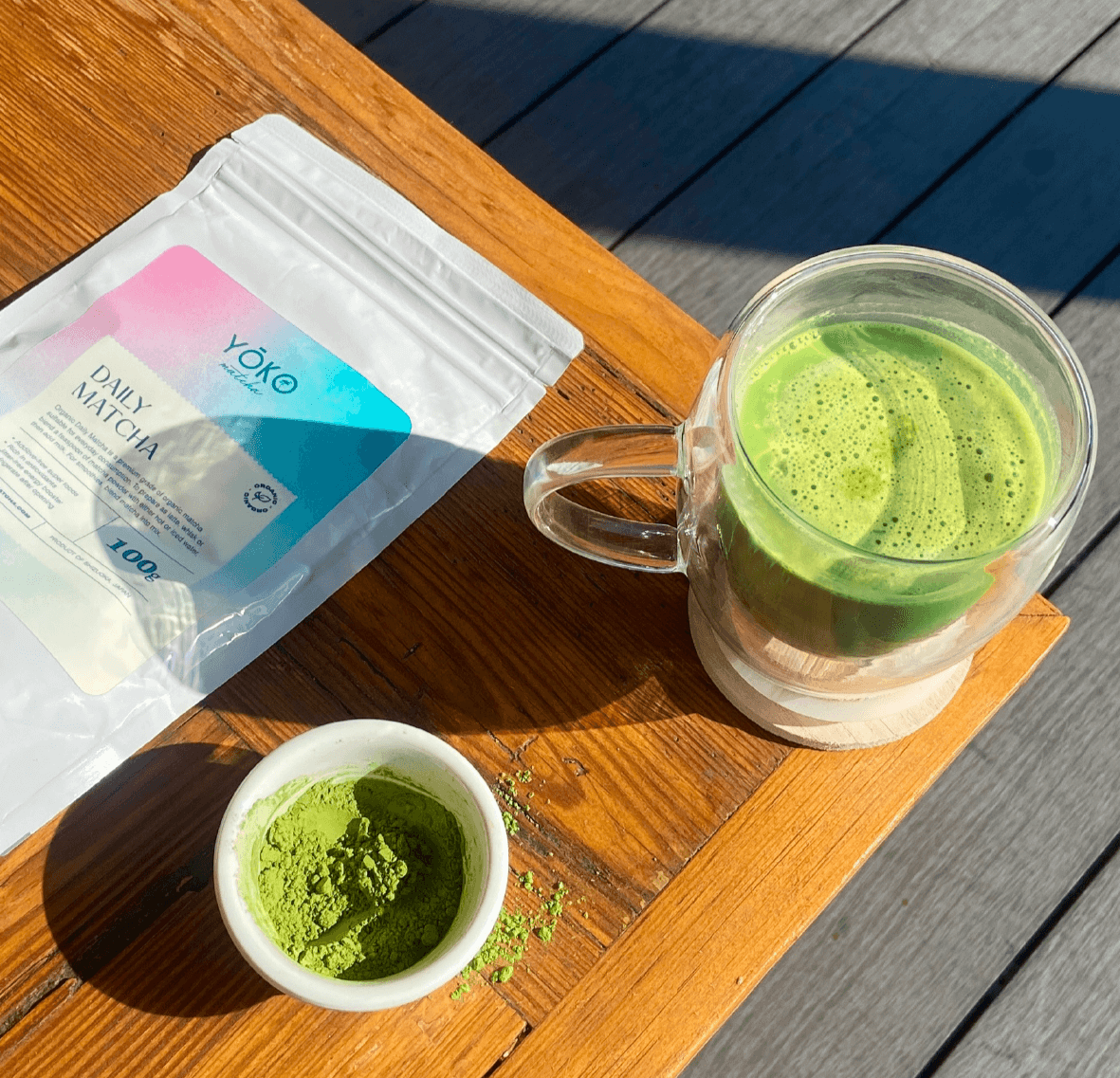
Unlock matcha's secrets for a perfect cup:
1. Gather tools: matcha, whisk, bowl.
2. Measure, and sift 1 tsp matcha.
3. Add hot water (2 oz). Whisk vigorously until frothy.
4. Savor and enjoy the vibrant flavors. Discover matcha's delights today!
CULINARY GRADE MATCHA:
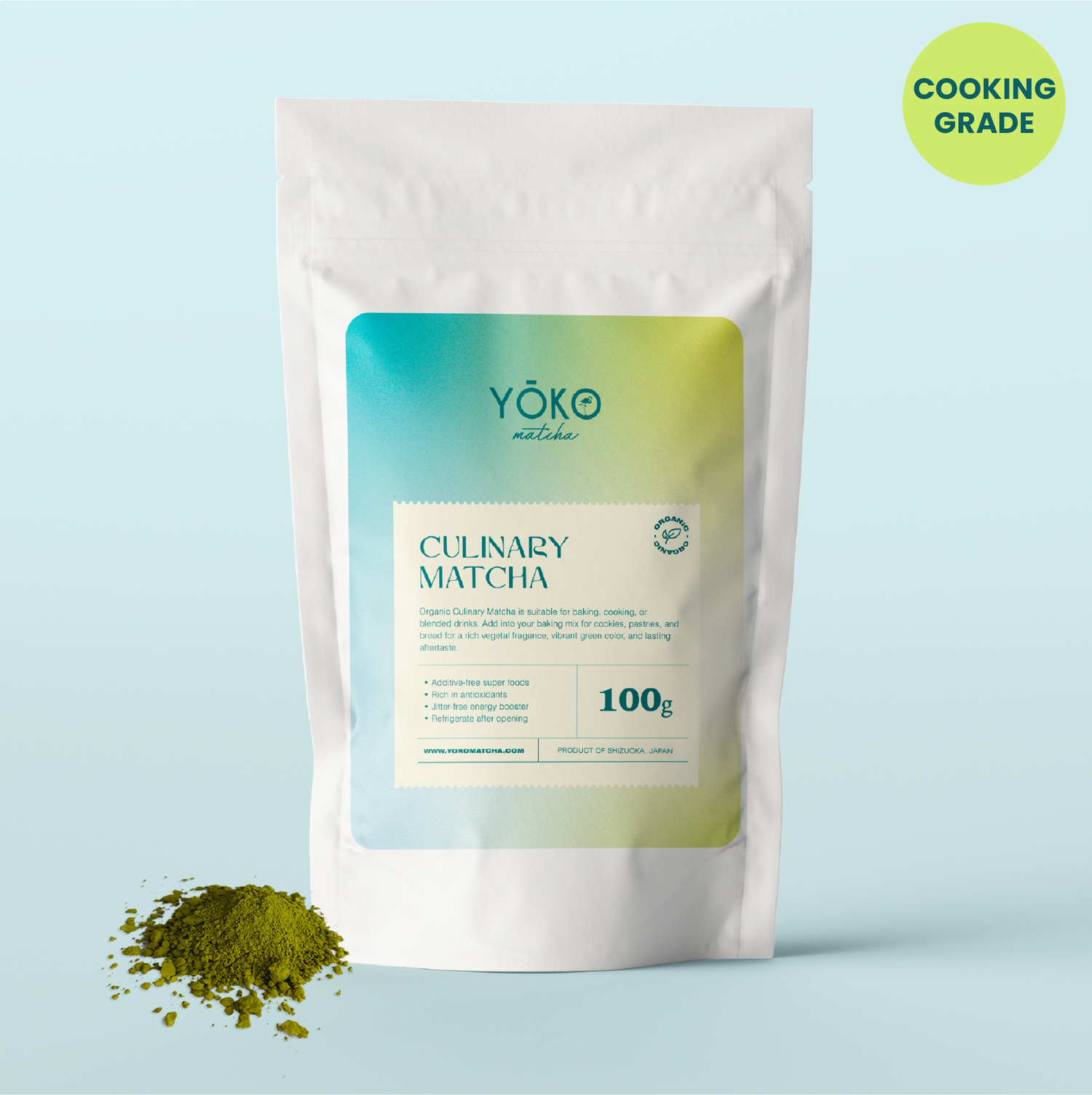
Embracing the world of culinary delights, Culinary Grade Matcha caters to the adventurous souls in the kitchen. Sourced from the third harvest, it imparts a robust, slightly bitter taste, making it ideal for baking, cooking, and blending.
While it may lack the finesse of ceremonial matcha grade, it delivers a delightful green hue and an earthy aroma to various dishes.
Whether you're experimenting with matcha-infused brownies, pancakes, or savory dishes, culinary grade matcha powder adds a unique touch and a dash of healthful vibrancy to your culinary creations.
Key characteristics:
Color and Appearance
Culinary Grade Matcha often has a less vibrant and intense green color compared to higher-grade matcha. The color can range from a dull green to a more yellowish shade.
Texture
Culinary Grade Matcha may have a coarser texture and might not create as creamy and frothy a consistency when whisked. The particles might not be as fine or uniform as those found in higher-grade matcha.
Flavor and Aroma
The flavor of Culinary Grade Matcha can be more astringent, bitter, and less delicate compared to ceremonial-grade or premium grade matcha too. It might have a stronger grassy or earthy taste. The aroma might also be less pronounced.
Usage
Culinary Grade Matcha is specifically designed for use in cooking and baking. It can be used as an ingredient in a variety of recipes, including matcha lattes, smoothies, ice creams, cakes, cookies, and more.
Create Culinary Masterpieces
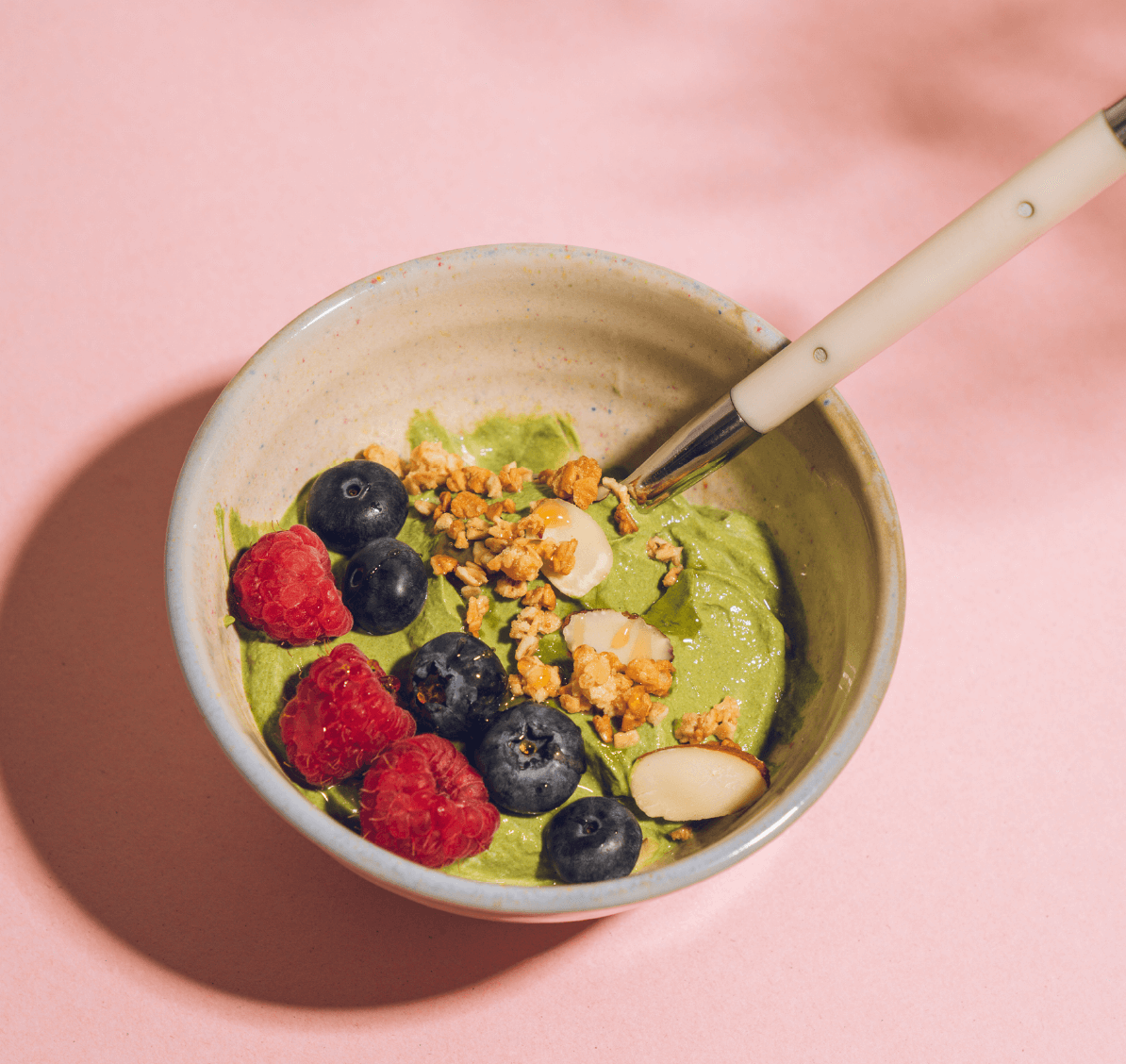
Add a teaspoon of matcha to your smoothies, baked goods, or homemade energy bars for a vibrant and healthy twist. Let your creativity soar in the kitchen.
Experiment with matcha-infused desserts, such as matcha macarons, matcha ice cream, or matcha-flavored cakes. Impress your guests with delightful and visually stunning treats.
Give your savory dishes a unique flavor profile by incorporating matcha into sauces, dressings, or even a sprinkle on top of your favorite salads. Elevate your everyday meals to extraordinary culinary experiences.
CONCLUSION
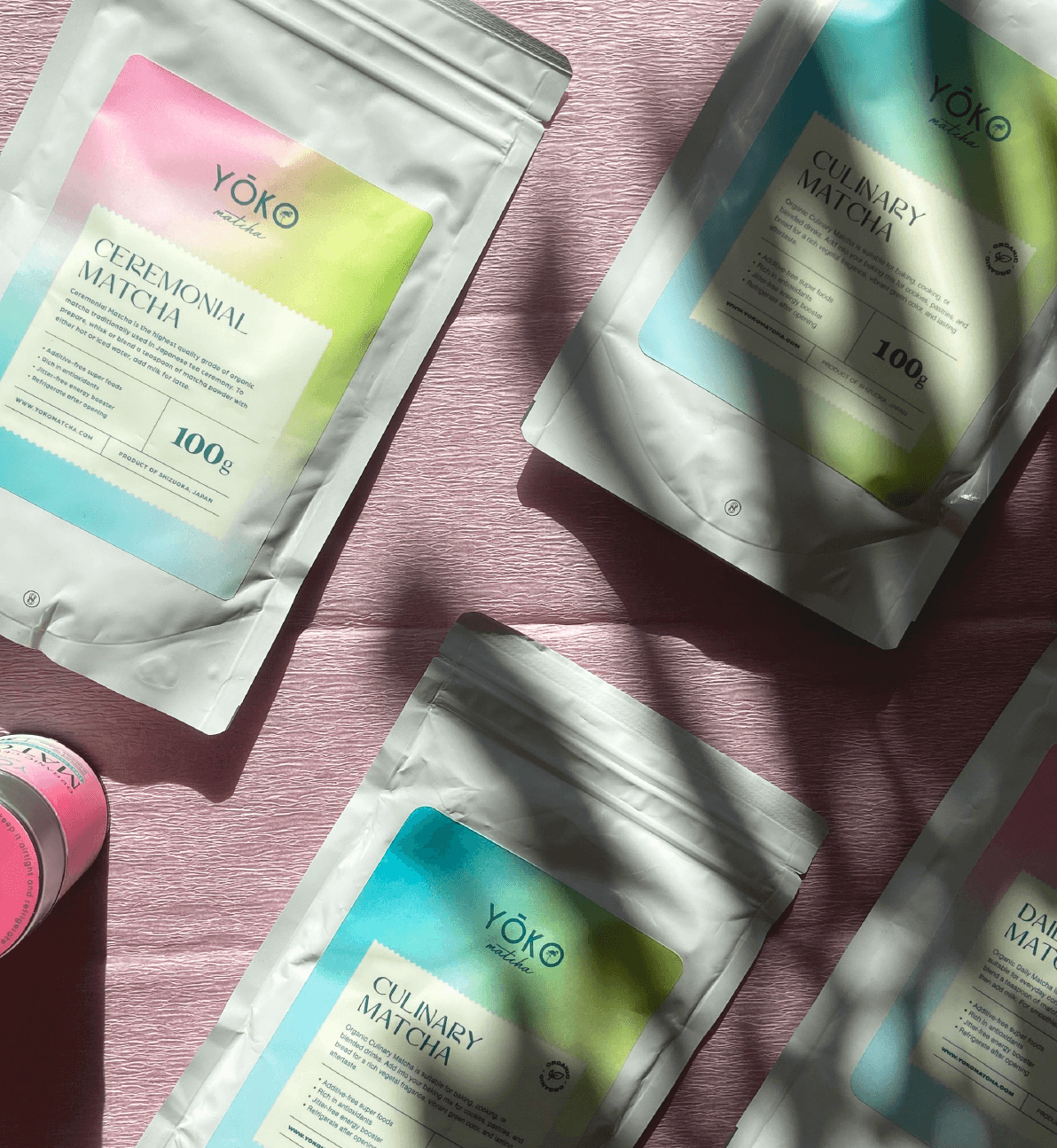
As you embark on your journey into the captivating world of matcha, understanding the distinctions between ceremonial, daily, and culinary grades empowers you to select the perfect matcha for your unique preferences and culinary endeavors.
From serene tea ceremonies with the refined Ceremonial Grade to the daily indulgence of Daily Grade matcha in your favorite lattes, and the adventurous culinary creations with Culinary Grade matcha, each grade offers a splendid gateway to the delightful and healthful world of matcha.
Embrace this ancient treasure with open arms, and let its vibrant green embrace you in a realm of flavor, culture, and well-being.

